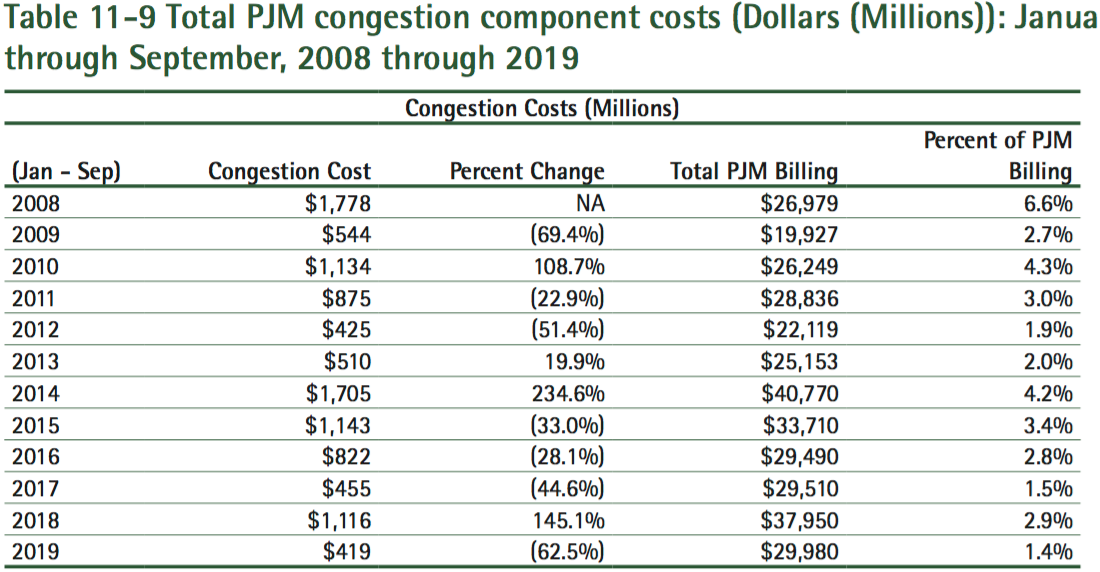So, what's the point of the Market Monitor? Right now, there is no point!! The Market Monitor doesn't care about utility profits or politics, it only cares about the electricity market, and it does so in completely mind-boggling ways most of us can never understand. Perhaps PJM and FERC should start paying more attention to the Market Monitor's recommendations so that they are implemented.
In it's most recent State of the Market Report (issued in multiple volumes quarterly, and then compiled yearly into a breathtaking volume that rivals War and Peace) the Market Monitor made this new recommendation:
Market Efficiency Process The MMU recommends that the market efficiency process be eliminated because it is not consistent with a competitive market design. (Priority: Medium. New recommendation. Status: Not adopted.)
Perhaps if PJM and/or FERC had been paying attention to the Market Monitor's recommendations regarding this PJM process over the past several years, elimination wouldn't be necessary. But PJM and FERC have completely ignored the Market Monitor and continued to support awful cost drains like the Transource Independence Energy Connection, and FERC even awarded incentives to the project that allows the company to recover every cent it's dumping down the IEC toilet, plus profit, even if it is cancelled. We're going to pay for this boondoggle, even when no shovel gets put in the ground. How's that for efficiency, folks?
The Market Monitor has a bunch of issues with PJM's Market Efficiency process. One recommendation that's been dragging along for years is that there is no process to compare new transmission to new generation to find the most efficient method to eliminate transmission congestion. Transmission congestion is a economic concept that occurs when the cheapest energy generated in a region cannot reach all the customers in the region. When that happens, the customers on the other side of the congestion point have to buy their electricity from other, more expensive, generators that can avoid the congestion point. Often, these generators are located closer to the customers who need the power. PJM's market efficiency process attempts to build new transmission to eliminate the congestion point, making any electron generated in PJM available to any customer in PJM. It's utterly ridiculous! Why use a tack hammer when a pile driver gets the job done? Building new generation on the other side of the congestion point also gets the job done. New generation may lower costs to these customers by increasing supply available. This is how PJM's markets are supposed to work! PJM can only order the building of new transmission, not new generation. The market (high prices) is supposed to provide the market impetus that spurs new generation builds. But if PJM orders and builds new transmission to eliminate the market effects of generation costs, that signal to build new generation never occurs. PJM short-circuits it with the only "solution" it has in its tool box. The Market Monitor wants PJM to develop a process to compare the cost of new transmission to the cost of new generation before ordering new transmission. Building new generation can be the cheaper solution. It also avoids burdening other customers with new transmission.
PJM has even gone so far as to have FERC okay a method that eliminates potential new generation from its market efficiency planning process. PJM likes to pretend no new generation will be built, ever, therefore it "needs" to build new transmission to solve congestion issues.
The Market Monitor also takes issue with PJM's benefit to cost ratio determination.
The MMU recommends that, if the market efficiency process is retained, PJM modify the rules governing benefit/cost analysis, the evaluation process for selecting among competing market efficiency projects and cost allocation for economic projects in order to ensure that all costs, including increased congestion costs and the risk of project cost increases, in all zones are included and in order to ensure that the correct metrics are used for defining benefits. (Priority: Medium. First reported 2018. Status: Not adopted.)
There's lots more in the report, but it's kind of hard to swallow for regular folks. Enter at your own risk! Even I can only process certain parts, but they are a refreshing voyage compared the the mountain of hubris and waste PJM produces in any given year. The Market Monitor is different. He's your watchdog for the PJM shenanigans that go on routinely.
In another section, the Market Monitor reports that transmission congestion has been reduced to its lowest level in 10 years. But we haven't built the Transource IEC yet! Is IEC really needed to relieve congestion? Numbers don't lie.
More importantly, when is FERC going to pay attention?
Why are we spending all this money on the Market Monitor's expertise and advice, when nobody listens to it? Maybe the ratepayers should take up their own collection to buy the Market Monitor a uniform, some handcuffs, and a studded billy club and encourage him to enforce his recommendations? I'm in for $5.

 RSS Feed
RSS Feed